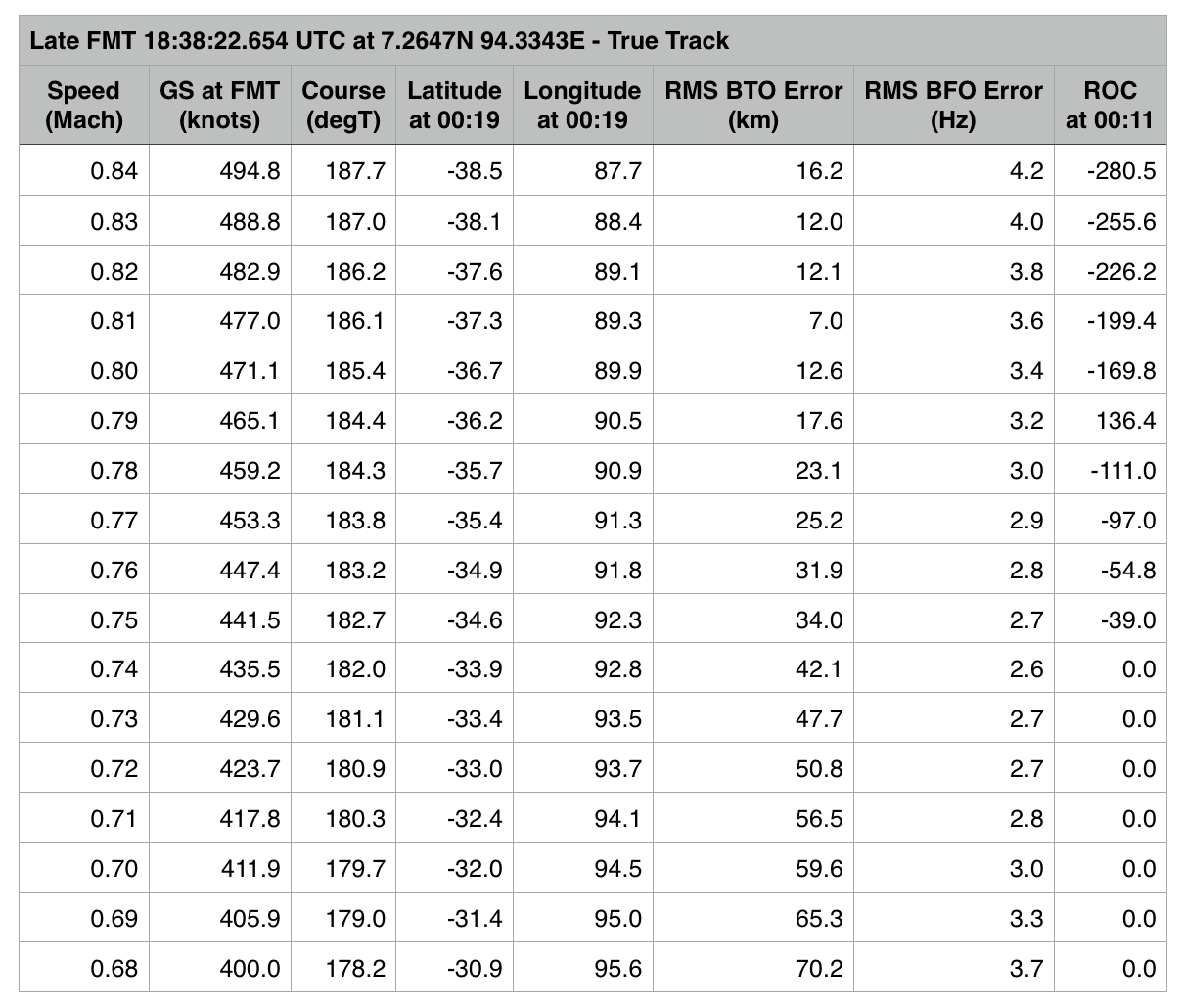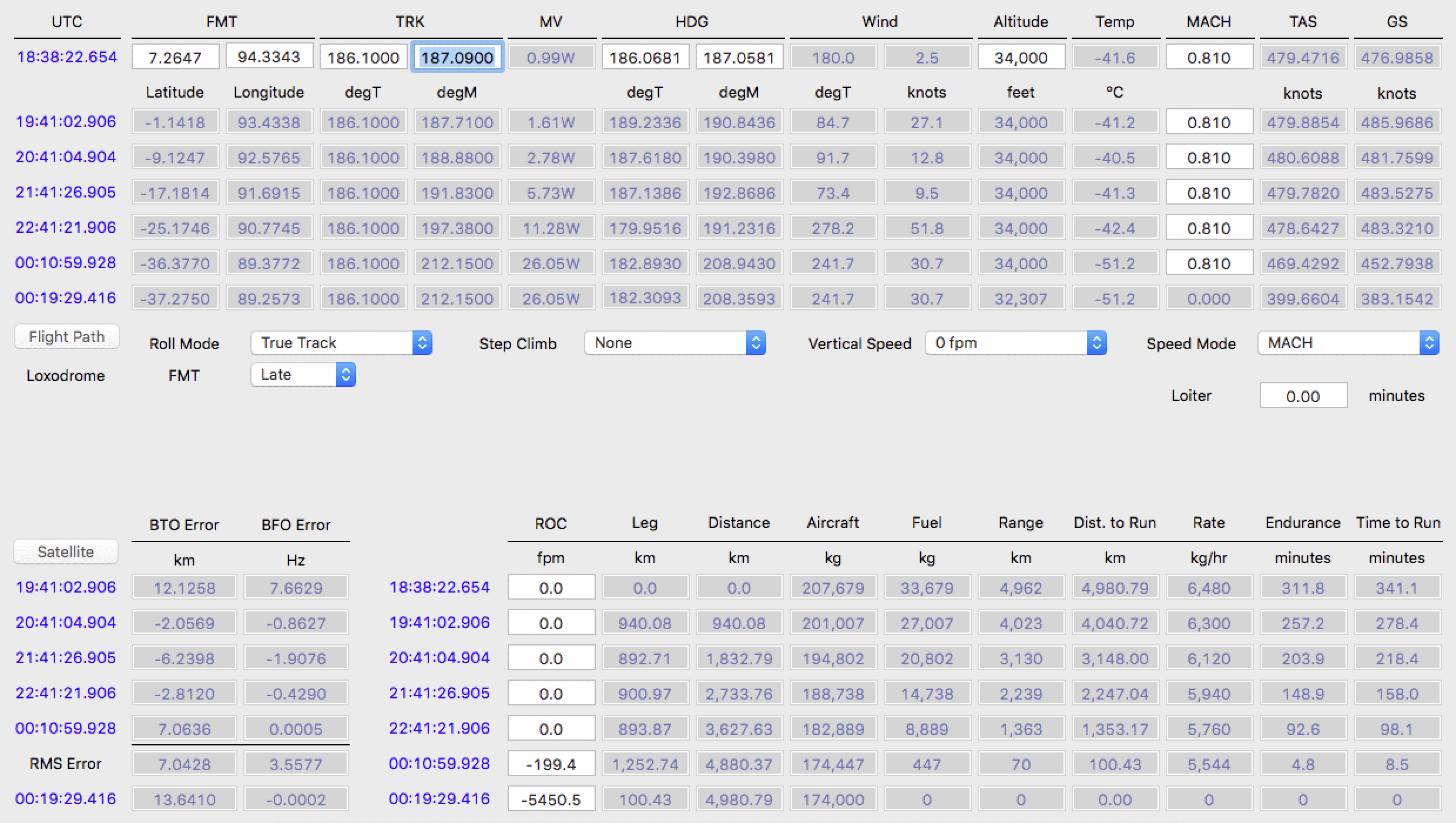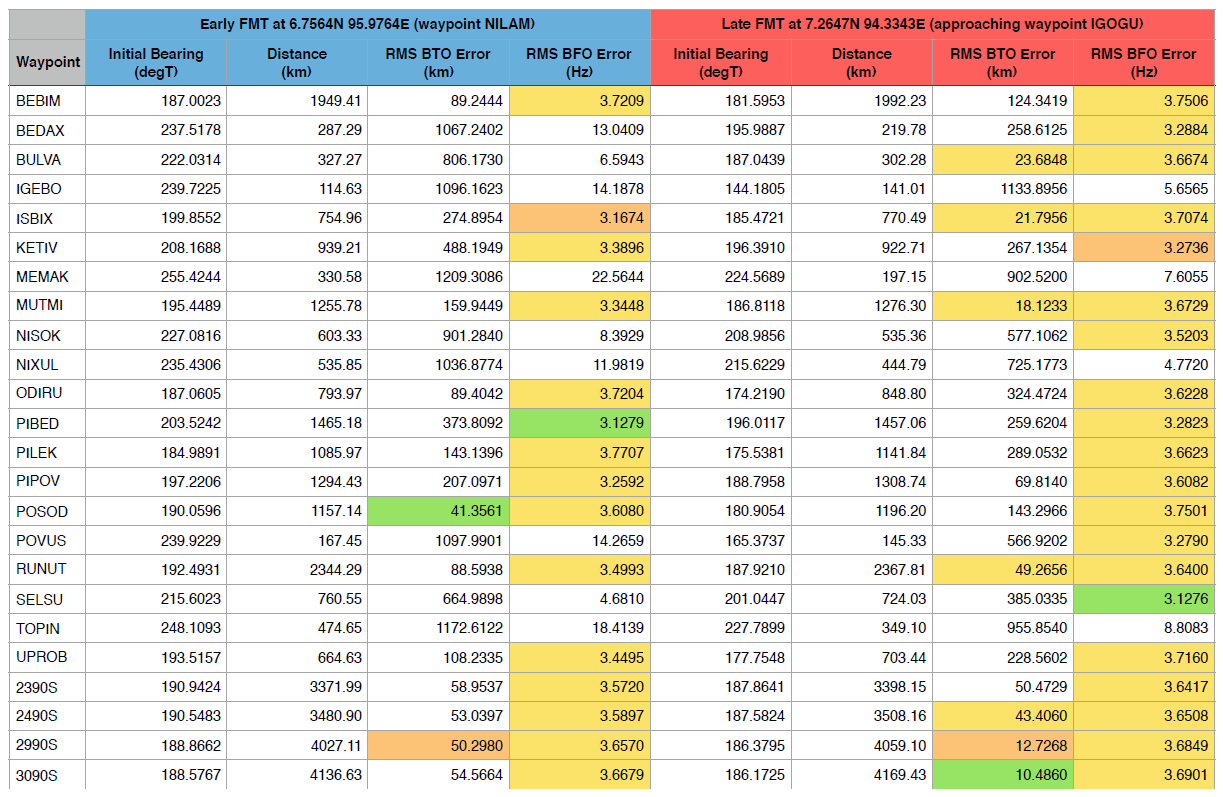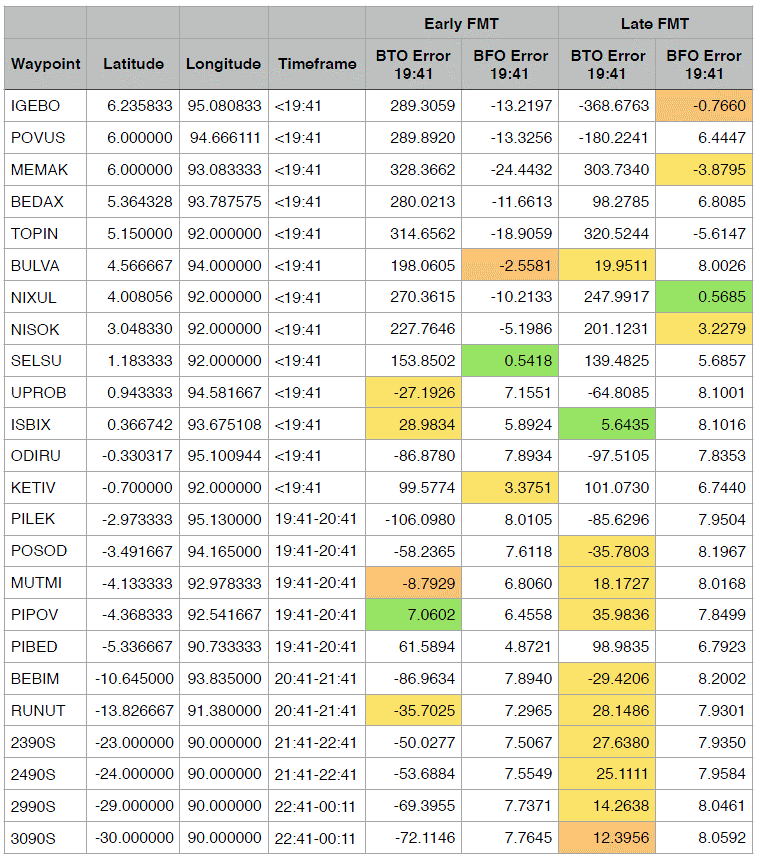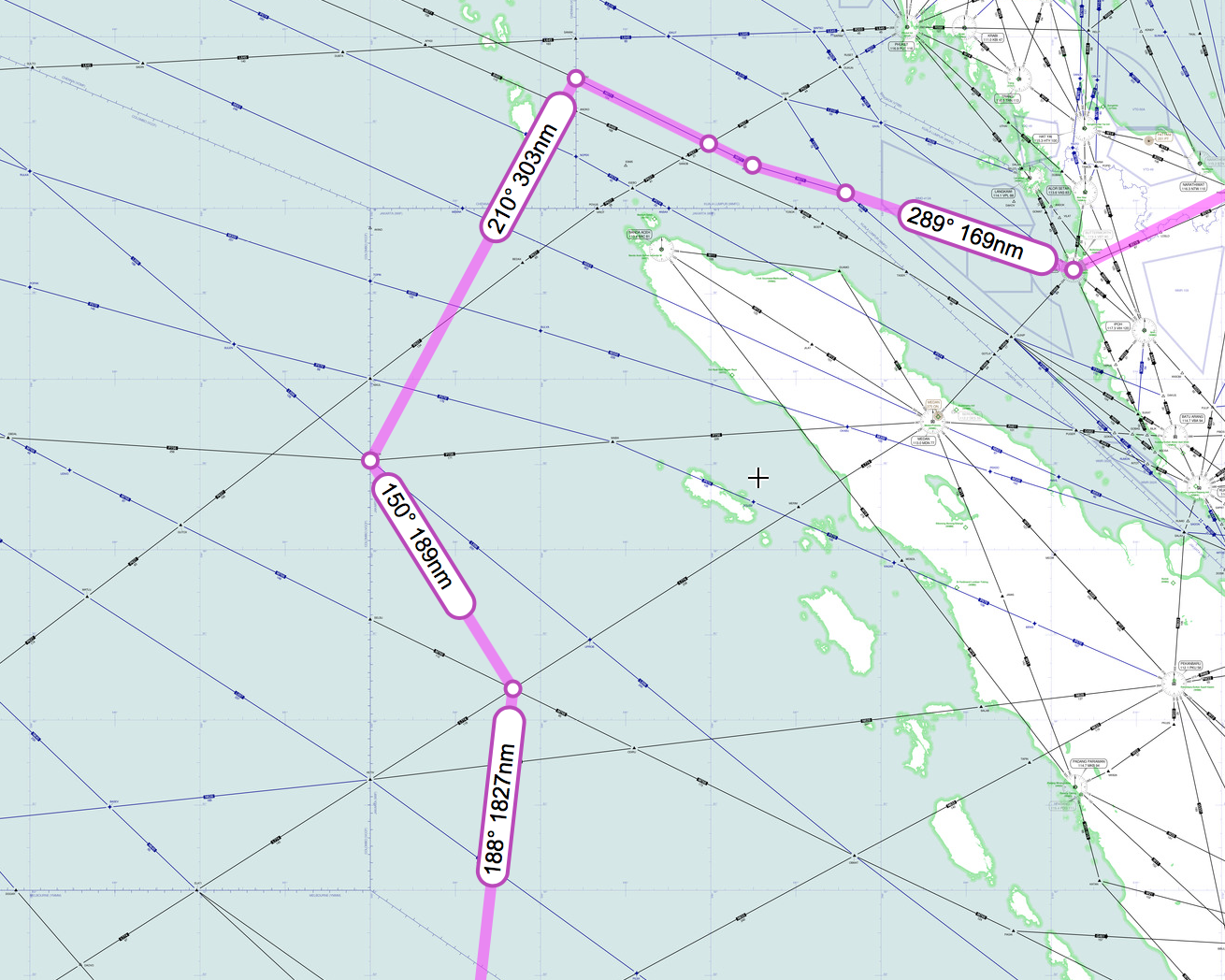The MH370 Final Descent Phase:
Illustrative Suboptimal Scenarios
Geoff Hyman
(report prepared in July 2015)
Report available here.
Preamble by Duncan Steel: On the eve of the second anniversary of the disappearance of MH370, there are still various outstanding puzzles which, if resolved, could aid in the ongoing search for the aircraft.
One of these puzzles is what happened when the aircraft’s fuel was finally exhausted: did it undergo a dive (understood to mean a rapid uncontrolled descent to the ocean surface) or did it glide to the surface? If it was known which of those descent modes occurred then a limit might be placed on how far from the 7th ping arc the aircraft could have ended up. Obviously this has significance in terms of setting a limit to the transverse distance away from that arc that the ocean floor search should cover, and so understanding why it has not been found thus far.
A rapid dive/descent is evidenced by various pieces of information, including: (a) The two final BFO values, spaced by eight seconds, which are indicative of a downward acceleration of about 0.7g, if they are interpreted as being valid indicators of the aircraft speed; (b) The fact that the final SATCOM logon was not completed, which should have occurred within about 90 seconds of the process that prompted the above two BFO values; (c) Simulator runs that show a spiral dive commencing once all power is lost; (d) Fragments of the aircraft now being found, which might be interpreted as implying a very violent crash in which the aircraft disintegrated. These matters have largely been discussed in previous posts here. This dive scenario is consistent with there being no conscious/able person left at the controls of the aircraft in this very final phase of the flight.
Nevertheless the possibility exists, according to the limited information available, that a pilot was still at the controls in this final phase. Many people have expressed an opinion that this is what actually occurred, but this is not a concern to me here because generally such people are expressing pre-conceived (or mis-conceived) opinions based on little or no definitive information. What is significant, from my perspective, is that various media reports have indicated that Australian authorities – both the ATSB and higher up within the Federal Government – consider that a final glide scenario might indeed have occurred. My opinion is that it did not, but I have not myself looked at the possibility with the necessary critical eye.
One person who has considered the glide possibility with the needed veracity and capability is Geoff Hyman, a member of the Independent Group (IG). Geoff drafted a report on this matter in July last year, giving it the title that appears at the head of this post.
The bottom line from Geoff’s analysis is that if no glide occurred, then MH370 must surely lie within 40NM of the 7th arc; his scenarios featuring only dives do not take the aircraft that far from the arc. A dive followed by a glide (assumedly requiring a pilot in control, and fitting against the BFO values mentioned previously) could have taken MH370 rather further from the 7th arc. These matters are all detailed in Geoff’s report, which is available by clicking here (5pp; 364 kB download).
Geoff considered just five scenarios in his analysis, which is likely more than adequate, but he has spelled out his methodology very clearly so that others might be able to repeat the analysis to verify the results, and also try other plausible sets of input parameters. That’s proper science, folks!
